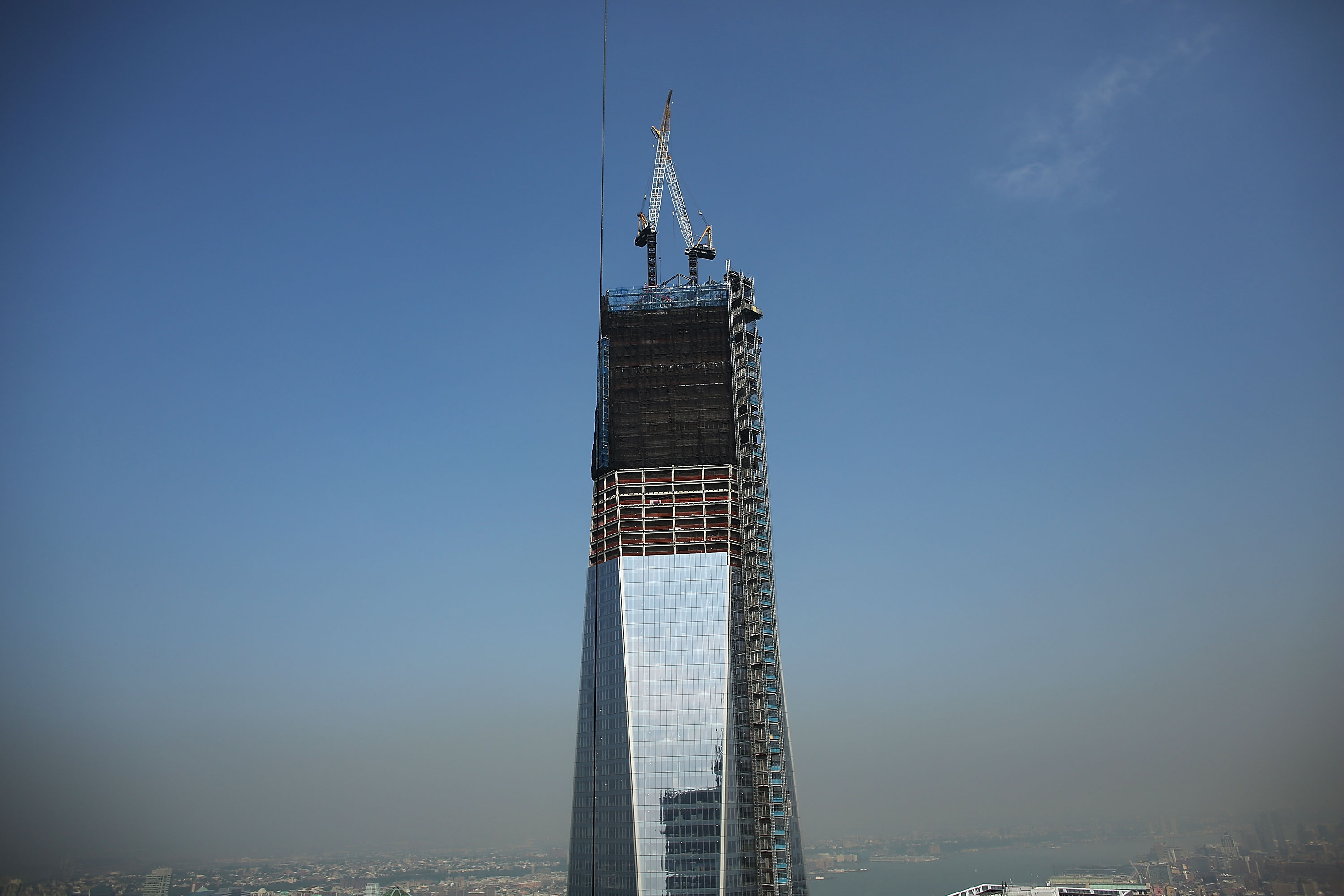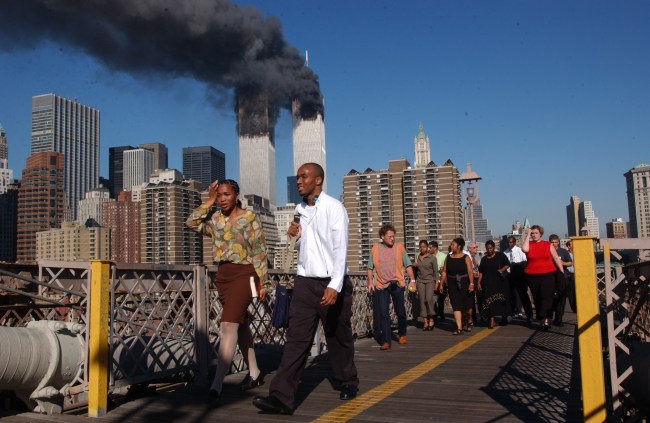
It’s been sixteen years since the September 11th attacks and the nation still feels the impact of that day. In a matter of minutes, the world changed irrevocably for every person in the county. Acts of terror in Manhattan, Pennsylvania, and at the Pentagon shattered our sense of safety and shifted our geopolitical policy in ways that continue to this day. 2,996 lives were lost, but the scope of the tragedy reaches far beyond the recorded casualties.
After 9/11, it seemed like the nation might falter under the weight of our collective pain and fear. Instead, we rebuilt. We were the nation that history had assured us we could be. Resilient. Brave. Unified. Now, more than a decade and a half later, we must memorialize the people who lost their lives in the deadliest terrorist attack the world had ever seen. But, we don’t just remember those who perished, we also remember those who rose up from all walks of life to commit acts of heroism. Because honoring their actions is what preserves our humanity.
Getty photographer Spencer Platt was in New York on 9/11/01 and has returned to 7 World Trade Center over the years to document the passing of time. When the first plane hit, he raced toward the Twin Towers from Brooklyn, snapping shots along the way. As memories fade, photographs are perhaps our truest barometer of reality — framed though they are and altered by the context in which they are viewed. In order to help us see what he saw, Platt spoke with us about that day, its impact on photojournalism, the difficulty in memorializing it, and why 9/11 is a story that must keep being told.
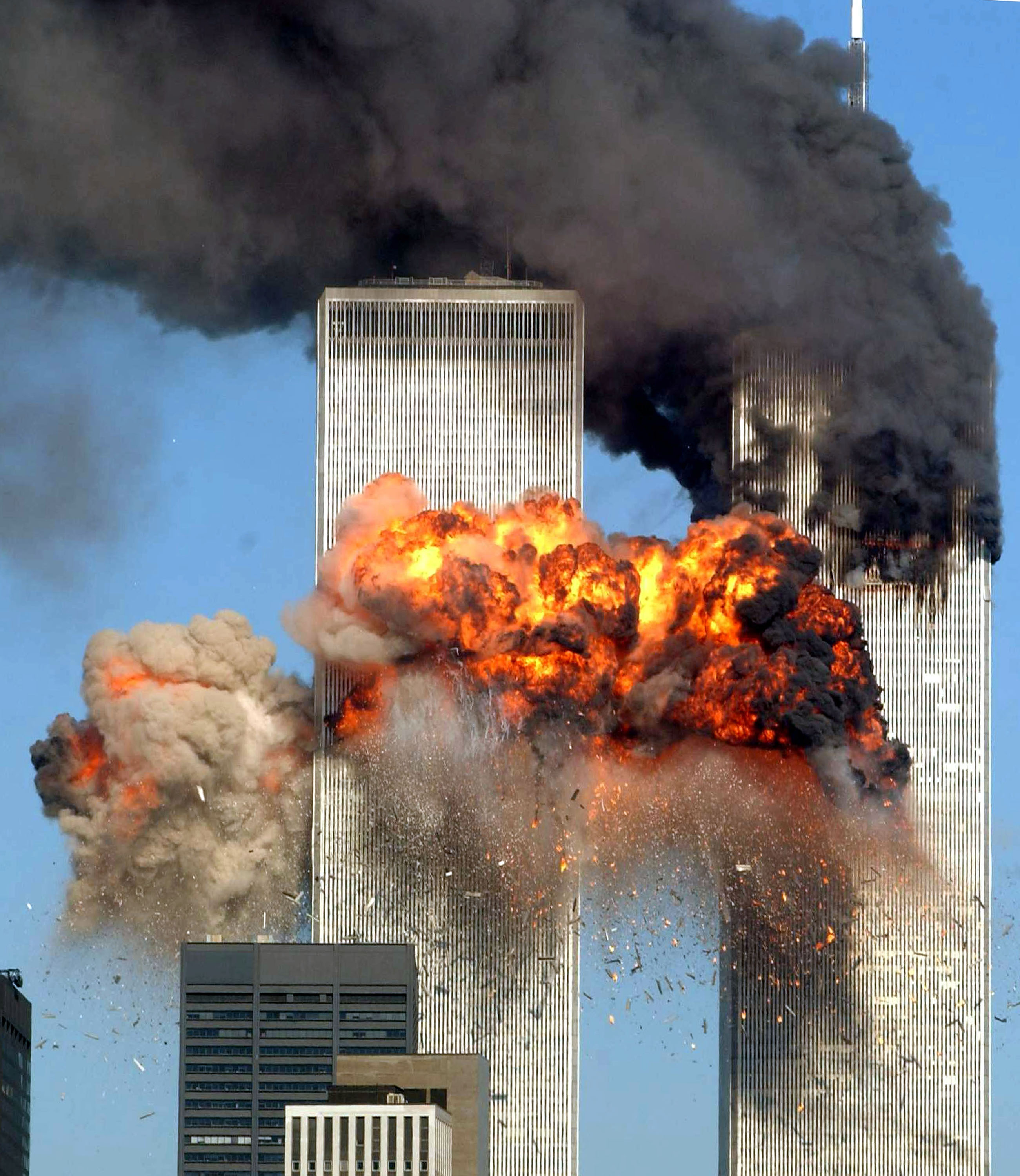
The anniversary of 9-11 is coming up and you’ve been taking pictures ever since the event happened. Can you talk to us a little bit about that project?
Well, I’m based in New York. I’ve been at Getty Images going on 18 years. And, I’m a general news guy. I’m a wire photographer, meaning that I’m pulled into anything and everything. I just got right down to cover the hurricane in Texas and I’m just on my way to Florida tonight to go cover Hurricane Irma. I’m just thrown around wherever.
When 9-11 occurred I was in, and still am, based out of Brooklyn. For me, as a wire guy, I would say that having the term “project” is almost a little precious for us. We just cover anything and everything. 9-11 happened in my hometown. Even though I’m on the road a lot, I’m still in the New York area a lot and it means a lot to me. It’s definitely close to my heart. I find myself, once a week, twice a week, I’m covering something that has a relationship somehow to the events of September 11. It’s become ingrained in my life, really, the day and the subsequent events.
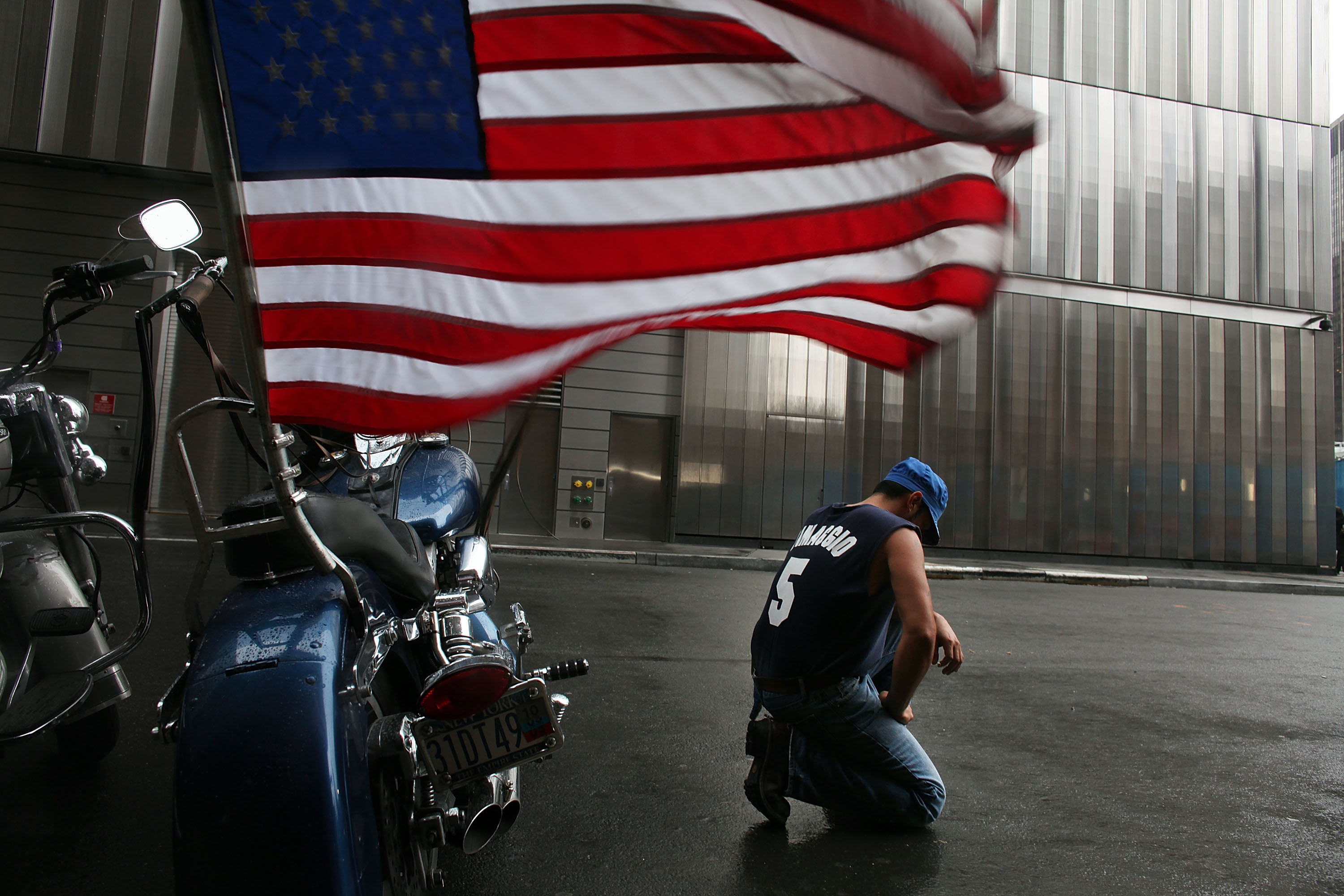
You hadn’t been at Getty very long when it happened, had you? Like six months maybe?
The wire part of Getty was still pretty new at that time. The wire service was around a year old or something. I’d been on staff, I would say, for about six months and I was pretty green all around. Like a lot of people at that age I wanted to jump on a plane and run to the next war zone, and I thought that’s what photojournalism work was really about. I and all my colleagues were totally unprepared. Psychologically, you saw war as a place than you get on the plane at JFK and travel 11 hours to see and all of a sudden war was really brought to our doorstep. Yeah, I was pretty new. I’d worked some small, regional newspapers, but nothing major. I had done some overseas stories but nothing significant.
It was also in the dawn of the digital age. I probably had the digital camera that I shot some of the pictures with of that day in my hands for about a month or two. I’m not a very technical guy to begin with, so I’m astonished that the photos came out technically as sound and accurate as they did that day. Again, because those cameras were working with very small file size.
Here I am in Texas. I’ll shoot something and I’ll pull over in my truck, pull out my computer, file it, and it will be up in the Getty wire within 10, 15 minutes. Back then, I don’t think I even carried around a laptop. You would run disks back to an office. When I shot those pictures that day of the second plane coming into the south tower, I recall I had to organize getting what we call in the business “a runner” to come meet me and grab the disk. I didn’t even see the images other than on the back of my camera. I didn’t see them until they went up on the wire.
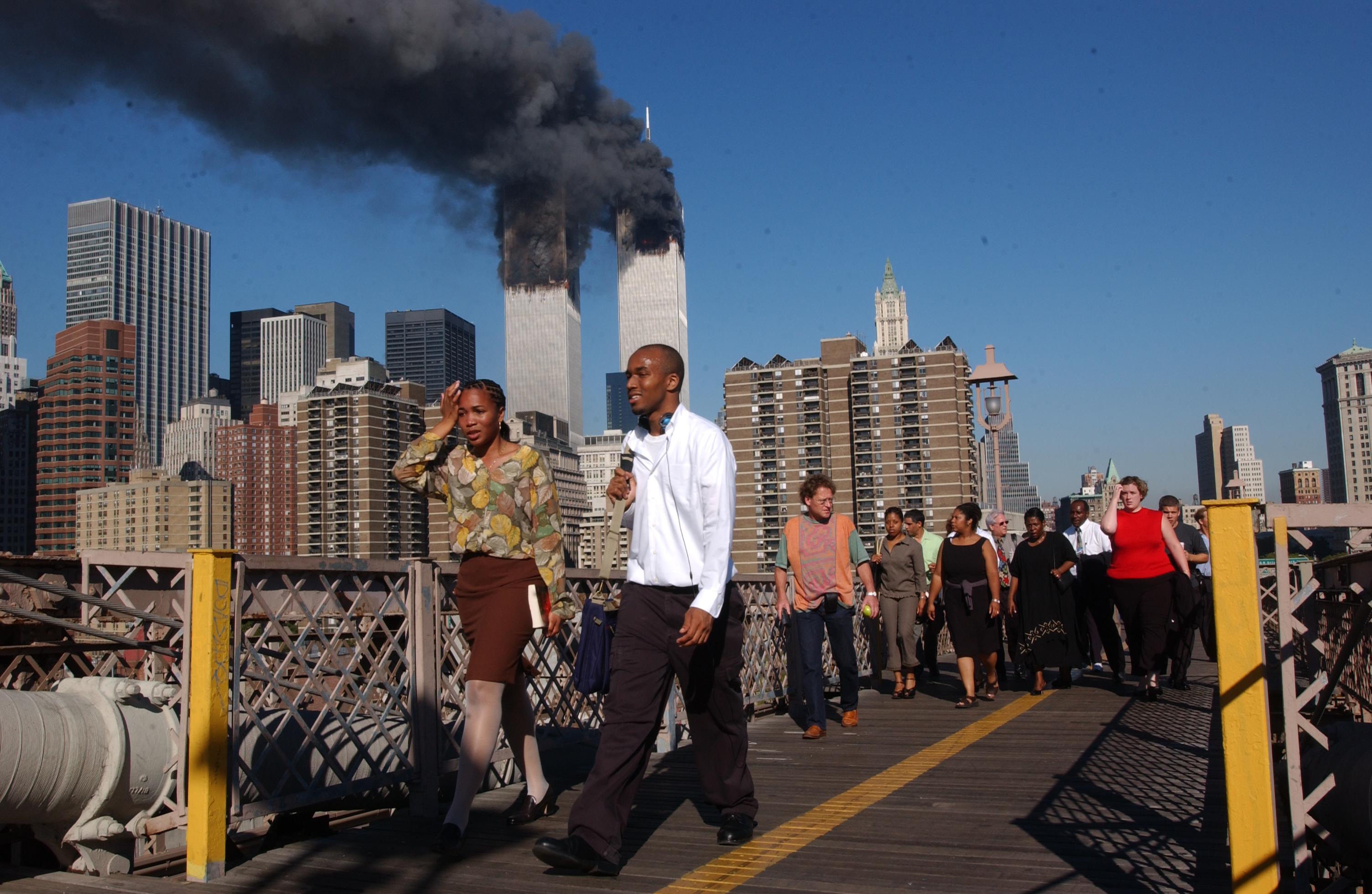
It seems like your career was indelibly marked by this event and changed thereafter. Is that fair?
Oh, yeah, absolutely. Again, I keep saying my colleagues too, but everyone. I grew up with a bunch of photographers and I think each and every one of us were changed. I think of my friends — Shannon Stapleton at Reuters and Tyler Hicks with the New York Times are the two names that come to the top of my head — we were all shaped by these events.
In the months before 9/11, it was probably about six months, American Photo magazine had a famous cover. It said, “Is Photojournalism Dead?” Just the fact of asking is kind of answering the question: “Yeah, it’s dead.” I think myself and the guys I was hanging out with back then, we were really apprehensive about whether this was even a viable profession?
This is also the Francis Fukuyama period. What was his famous quote in which he said basically the world is going to become capitalist, and the future is going to be very blasé? There’s going to be no more conflict, no more wars, no more catastrophes? Not that we were wishing that, but there was a brief period (Russia had imploded), and people were questioning the future of photojournalism. I really, for a while, thought I missed everything. I missed everything of interest; history had kind of stalled out. When 9/11 happened, I remember talking to a colleague of mine at Getty, Mario Tama. I can recall telling him, “Mario, our lives will never, ever be the same after today.” That was kind of bravado in the heat of the moment, but it turned out to be pretty prescient and right.
At that moment, I couldn’t have foreseen Afghanistan. I couldn’t have foreseen Iraq. I couldn’t have foreseen ISIS and the thousand other spin-off events that have subsequently happened because of that event on 9/11. It certainly did change. We all obviously wish it had never happened, but it changed our lives forever and our careers and it made a lot of our names in the industry.
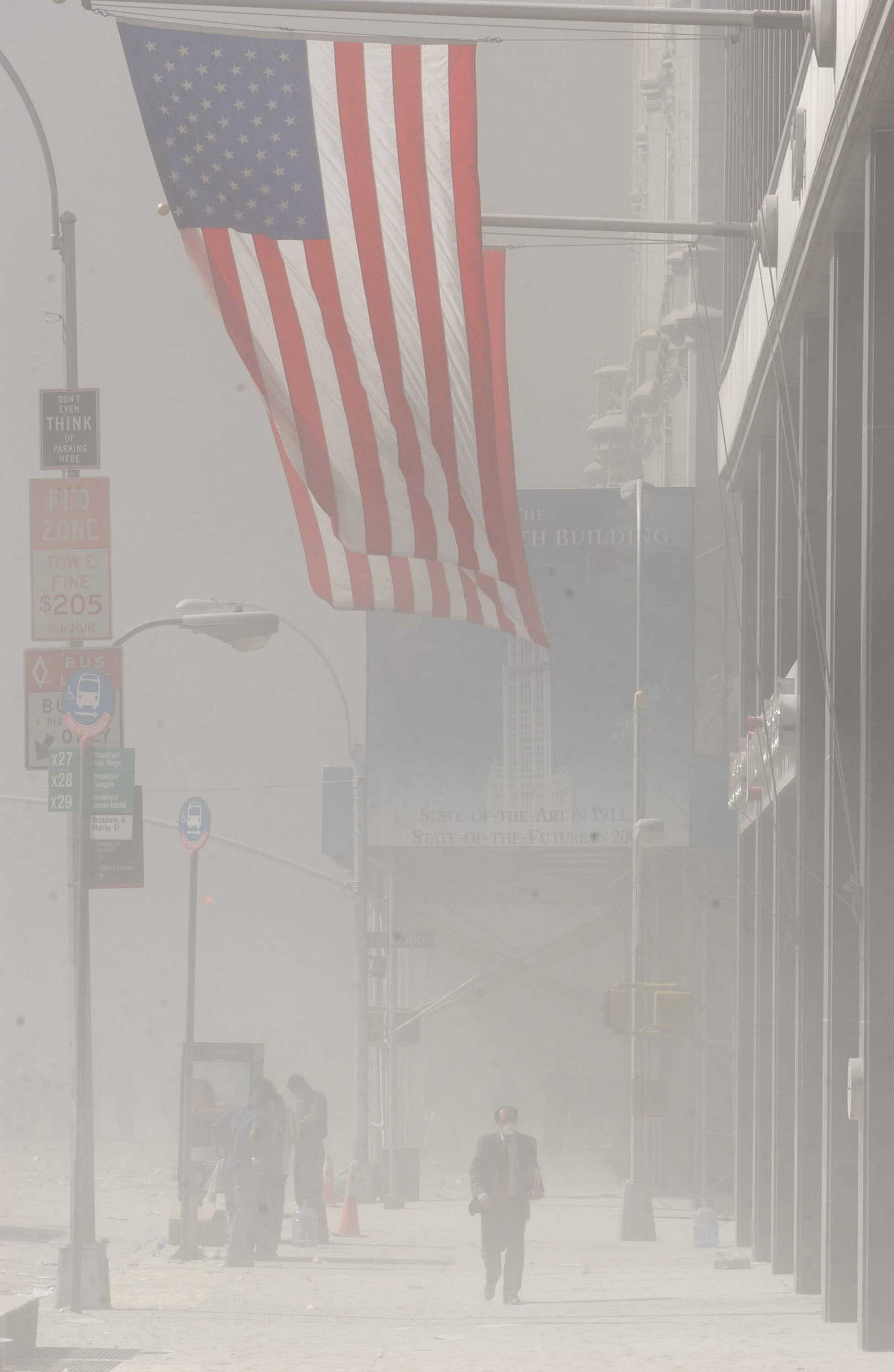
You’re taking these pictures for this larger story that has endured. What do you see as being the importance of that story? Why is that something that we need to continue telling?
You know, I think first of all to honor the thousands of folks who were killed on that day, and also you live in an ahistorical period where people really don’t pay a lot of attention to the past, to history. History is what happens 15 minutes ago, last week. You look at the events of the second World War and it’s just amazing to how many people are naïve to the fundamental facts of basic history.
9/11 is arguably the most important event that has happened in American history since maybe the Civil War. I’m doing it because I’m a student of history, I like history. I feel that’s part of the vision of photojournalist, but at the same time to document the moment. We live in a superficial world. I’m a hard news guy. I’m not the best at articulating why I do it, but I do feel, personally, that it’s worth my life what I do. I look at some of these people in Silicon Valley who are developing new mattresses or something. You know, and I think that’s great; they’re probably making a lot of money and maybe driving a Ferrari or something by the time they’re 40, or 30, or 25. But, for me, to start for a company like Getty Images, it affords a gravitas to what I’m doing.
Again, I’m not that great at articulating that but in 100 years, someone, somewhere (it probably won’t be in a book, but it will be on a computer) will be looking at my images, and they’ll be learning about the world. Just like I do today, I’m always going back through old books, all the time. Here I am in Texas and when I packed my bag to come here, I grabbed a book by Ernst Haas; he was a great Swiss-American (I think he’s just Swiss, actually but he moved to America) photojournalist. I waited until like yesterday when I was trying to cover some of these flood photos and feeling a little down; I wasn’t feeling it. I literally just grabbed that book out of my bag for 30 seconds and skimmed through some photos, and it energized me. It made me want to go out.
He’s a guy that’s all about the aesthetic. He wasn’t a particularly political guy, and that’s the weird thing about photojournalism, too. It’s not just about the politics or the facts. You have to take reality and to be good at it, to succeed at it, you have to transform it in a very aesthetically pleasing, artistic way. It’s a weird dynamic, you know. Especially in today’s age when everyone is bombarded by visuals, your pictures have to really stand out because they’re competing with all sorts of crazy graphics.
You have to take a serious subject like the events of 9/11 and the rebuilding the city and memorials, or even an event like where I am now, a flood, and you can’t just take a photo that states facts. It has to be captivating in an aesthetic way, in an artistic way. That’s one of the great challenges of this profession.
I think we, as a society, need to document things because if we stop doing this, stop telling our history, we stop understanding our history and who we are as a people and how we got to where we are.
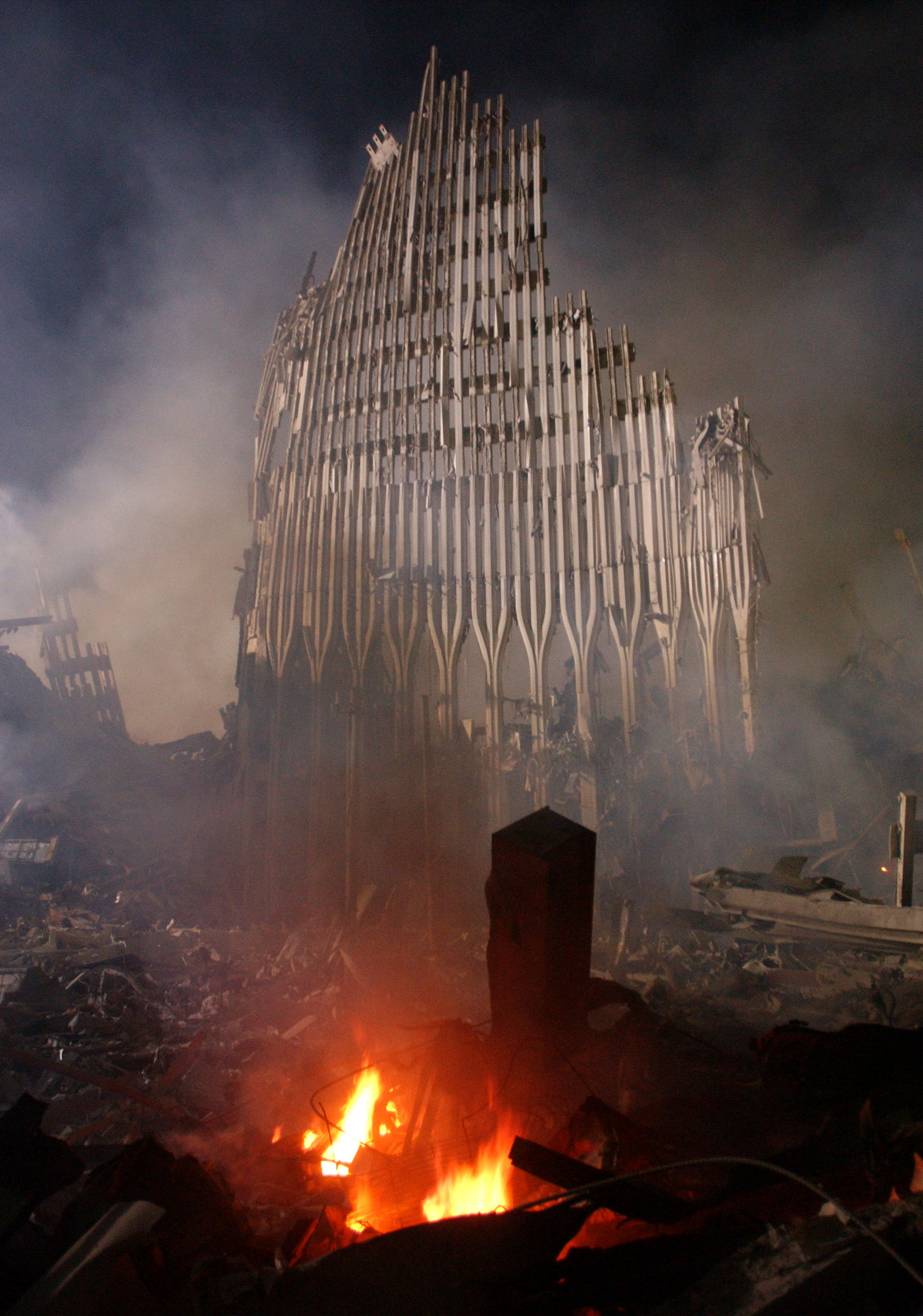
Do you think that visually telling that story is perhaps more impactful or visceral than any other medium?
That’s a good question. It really kind of locks you in. I have friends who are writers like yourself and I fully respect them. What they do, it’s a totally different part of the brain and I wish I had that ability sometimes.
Before 9/11, New York Times or whatever, I think print reporters always had the clout, always kind of dominated and I think 9/11 really was a time that editors around the world and readers realized just how important visuals are to the story. Not that they weren’t important before. Obviously, the Vietnam War and the Second World War visuals were incredibly important, but something really changed on 9/11. It was just such a visual event, that day and then the immediate aftermath, whether it be in New York or on the ground in Afghanistan and throughout the Middle East. It just became incredibly dominated by visuals. I think the event itself lends itself to it.
Also important visuals are playing in our lives today, whether it be on our smartphones and just how easily we consume visuals and pictures and video and everything else. It’s strange, you talk about reading magazines, there was that wall that separated the writer and the photographer, now I’m starting to notice photographers, big name, top photographers, that are also writing the text. Back in the day, that was taboo, you know, you would maybe hear National Geographic did it occasionally, but it was really something that I think editors frowned upon. They wanted a firewall between the scribblers and the image makers. That, I’ve noticed, just in the last couple years, that’s really started to change.
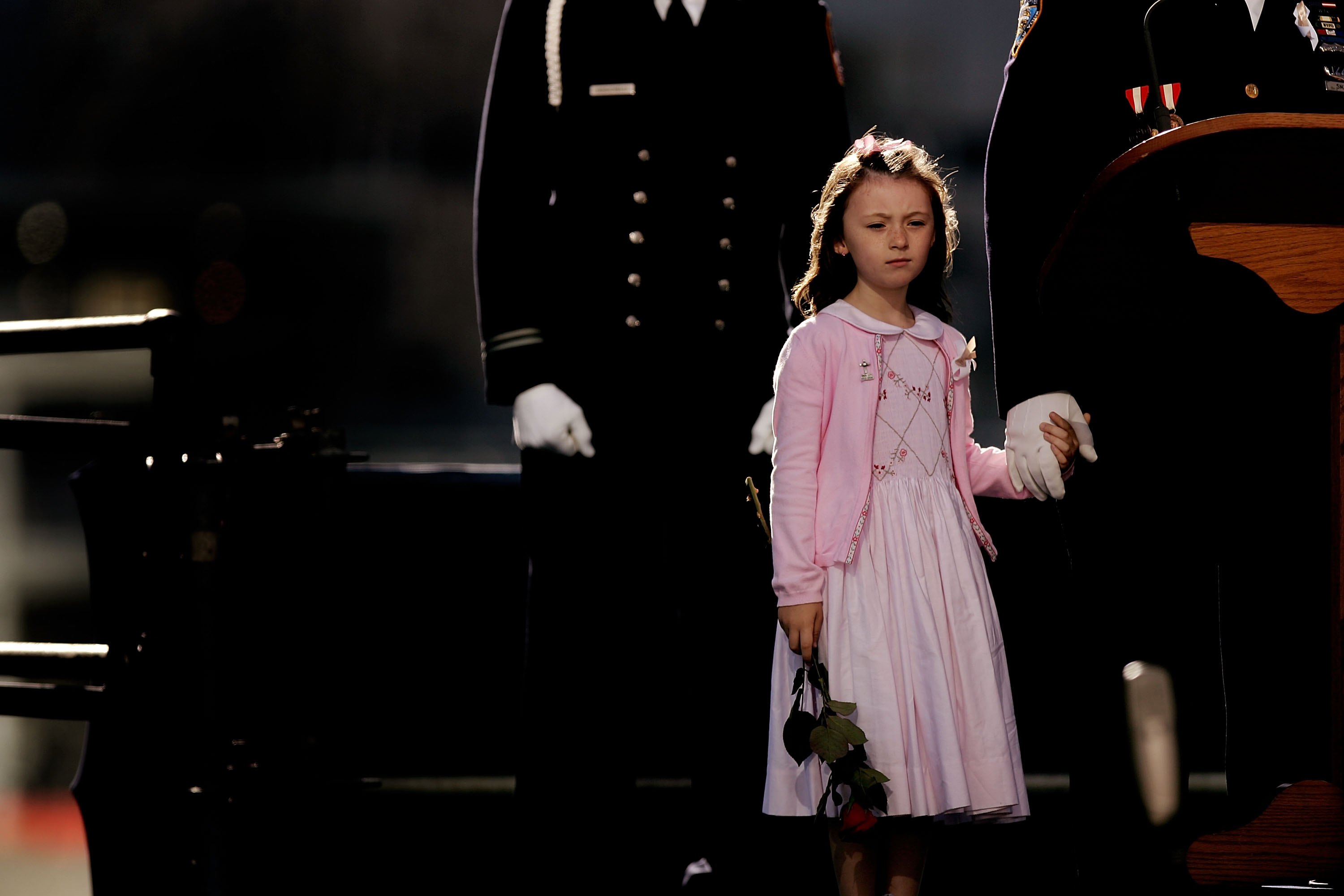
I have a question about these changes and millennials. It occurs to me that you have the first generation of adults right now that don’t have any memory of 9/11. Thoughts?
Yeah you know it is interesting. I’m in my mid-40’s and I’ll meet someone who is in their 20’s and they were not alive or in first of second grade. You know, memorials can only do so much. I think a lot of it is we have to just keep telling stories, and we just can’t forget that day. I don’t think there’s any sure way to guarantee that future generations are going to remember or really have an understanding of how profound that day was. I think if you had a soldier from the Second World War, 10, 20, years after that, it’s inevitable that history kinds of mellows events, and that’s a fight that you’re never going to win.
I don’t personally know, or I haven’t even given that much thought to how we can assure that future generations, younger generations, people in their 20’s or teens are going to be impacted by this and remember that day. Going back to what I was saying earlier, it does concern me because we’re living in what I would strongly call an ahistorical moment. The humanities are not taught as much in college. You have fewer people that are history majors, and the speed of culture today, it doesn’t really celebrate contemplation or reflection. I think the people that are trying to design the memorials, they really have their work cut out for them because it’s going to be very difficult.
For me, as a photojournalist, I can only do my small bit. Luckily, where I am at Getty, our photos get a lot of coverage. I know if I put something on the wire that it’s going to be seen by a lot of eyeballs around the world, but yeah I wouldn’t really have an answer to how we can keep this kind of fresh in people’s minds and both just honor the people that we lost and also to avoid making the same mistakes that led up to that day or in what happened days and years after.

Can you just describe what it was like for you that morning? If we’re talking about keeping it alive for people, just give us a little.
I had been out pretty late the night before and I was a little groggy. As is customary, I always have the news on in the morning, on the radio, NPR local station on, and going back to what I was saying in your first question, psychologically now if something goes bang, wherever you are in the US, unfortunately, one of the first things you think of is terrorism. If you’re in a restaurant and you hear a crack, I think a lot of people would duck under tables because we’re so used to seeing that, whether it be in Barcelona or Paris or somewhere in America, in Sacramento or whatever.
Back then, we were a little more innocent and naïve. If you told me that a plane today hit the Empire State Building, I would immediately think terrorism. Back then when I heard, it came over the radio, first reports were a commuter plane or a small plane and people, what the vibe I was getting from what I was hearing in those immediate minutes after was that this was an accident, a tragic accident. I knew, accident or terrorism, that I had to cover it. In a mad dash, I was living in Dumbo in Brooklyn at the time. I ran outside the door and I had forgotten my wallet. I had forgotten my second camera body.
Cellphones were not entirely new, but they were still pretty new back then and the signals, they’re not that much better today, but they were really poor back then. I remember frantically trying to call my editor, and it was very eerie; I was getting all these crossed phone calls that were coming in. Mid-conversation a call would come in and it would be someone talking about 9/11. It was all these random calls. My phone was useless.
I remember on my street I was able to get a glimpse of the smoke, and it was just incredibly acrid black smoke spilling out. That would be the first moment that I knew. I said this is much bigger than a small commuter plane or a tourist plane or something. I ran down to the base of the Brooklyn Bridge. Everyone was out of their cars; traffic stopped. Cabbies, everyone was sitting, staring, doors open, just staring, this was North Tower that was burning. And, it was an incredible visual. Oh my God.
I turned around and I started photographing that, and then, I would turn around and look at the people. I had to switch lenses. Again, I had one body. I had a big lens on and I turned to the burning tower. I didn’t even hear the second plane coming it. I didn’t see it. I didn’t hear it. It happened so fast. The fireball hit, the plane hit, and the ensuing fireball as I was clicking away. I recall also hearing this huge gasp behind me, probably two dozen people, everyone was screaming. Oh, my God. And, then we knew it was terrorism. We didn’t even have to say it. I remember it was just in that fireball as the second plane plowed in, the whole world changed. Your whole perspective on the world, your perspective on your work, on everything, changed in that second.
I remember putting my camera down, kind of shocked. There was a taxi driver and he looked at me. I think he probably didn’t believe what he saw either. I started going through my images on the LCD in the back to confirm that this actually just happened. I’m looking at the images and I see it, and the taxi driver is looking over my shoulder, kind of bizarrely yelling, “He’s got it, he’s got it!” No one believed what just happened in front of their eyes. He actually lent me a buck because I needed a buck for water. I was parched.
Then, I ran over the Brooklyn Bridge, all the other people were running the other way. By the time, I got over — halfway over the bridge — I remember I started seeing the first people covered in debris, the classic images, people startled. I quickly made my way to the towers. They were still standing. I credit the NYPD. We don’t always have the greatest relationship, but they certainly saved my life that day. I and other photographers were trying to get into the towers. We would have never thought in our lives that they would come down. The police just pushed us away and we backed up a couple of blocks.
What seemed like eternity was probably 20 minutes. The first tower, the South, came down first. Yeah, I’m not a big believer in therapy; I’d like to believe I can handle just about anything I see. I do remember that night having a couple of beers and thinking; I couldn’t mentally get my mind around it. I just couldn’t get my head around it. It was just too much.
